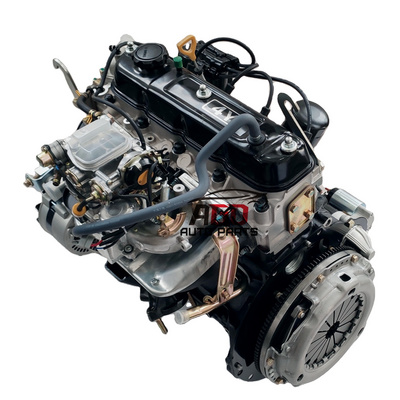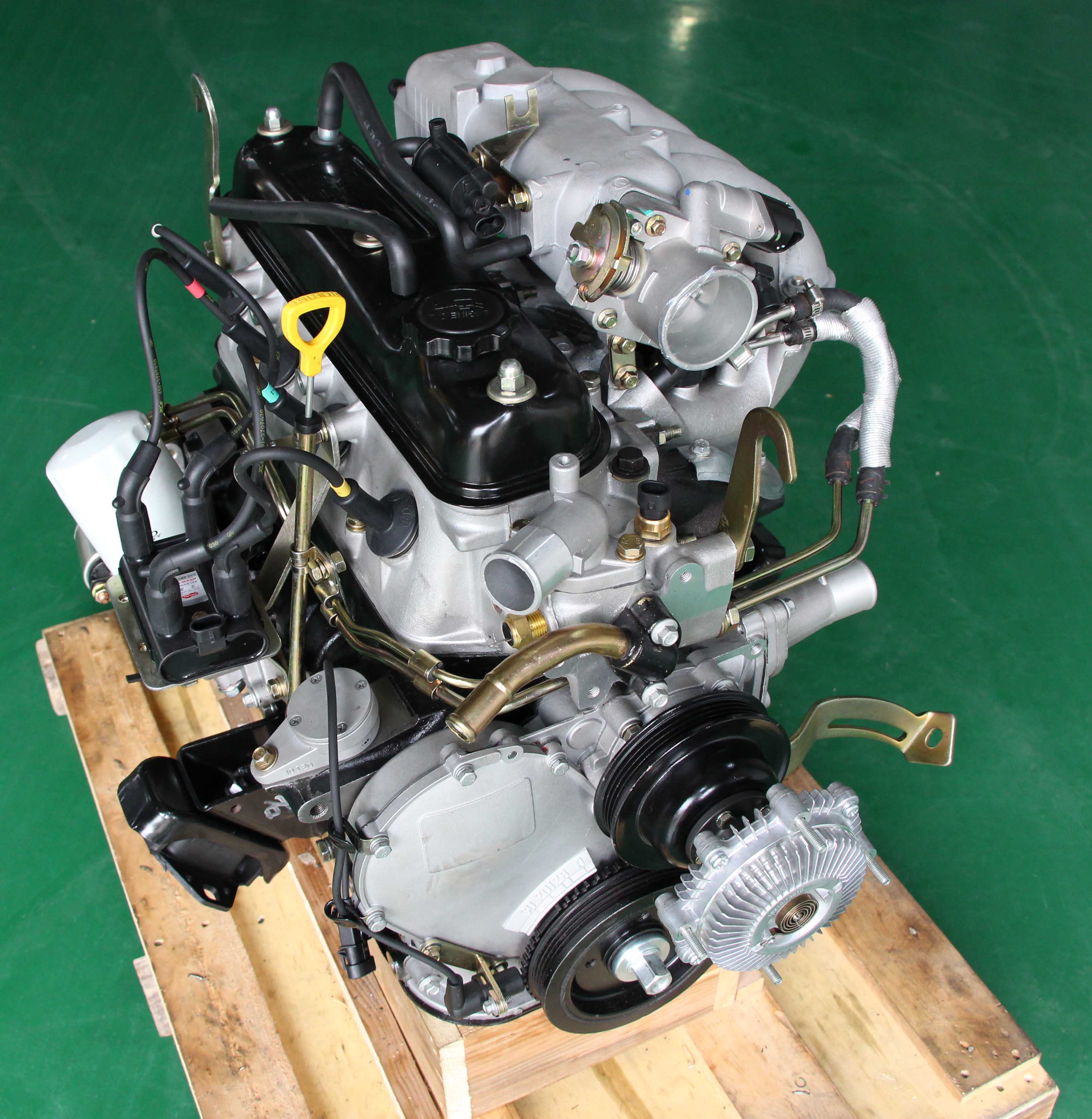How the 4Y Engine Powers Your Vehicle with Efficiency and Reliability
Exploring the Various Sorts Of Engine: Which One Fits Your Needs?
In the quest to identify the most appropriate engine type for your certain demands, it is critical to review the distinctive features and benefits of each alternative readily available. Inner burning engines proceed to control because of their integrity, while electrical engines are acquiring traction for their sustainability. Hybrid engines supply a functional concession, and diesel motor stick out for their power popular applications. Additionally, alternative gas engines existing ingenious options, albeit with specific limitations. Recognizing your top priorities will certainly contribute in this decision-making process, resulting in an expedition of variables that may influence your selection.

Inner Burning Engines
Inner burning engines (ICEs) are the foundation of modern transportation, powering a huge variety of vehicles from autos to planes. These engines operate on the concept of converting gas into mechanical power through a collection of controlled surges within a combustion chamber. The most typical kinds of ICEs include fuel engines, diesel engines, and rotating engines, each developed to meet certain performance and effectiveness demands.
Gas engines typically utilize trigger ignition, while diesel motor rely upon compression ignition, causing distinct distinctions in gas efficiency and power outcome (4y engine). Rotating engines, or Wankel engines, use a portable design and smooth operation, yet are less generally used in mainstream applications
ICEs have undertaken significant improvements in modern technology, consisting of the introduction of turbocharging and fuel injection systems, which enhance total performance and efficiency. Regardless of their performance enhancements, ICEs deal with enhancing scrutiny due to their ecological influence, specifically relating to greenhouse gas discharges.
Electric Engines
As issues about ecological sustainability and fossil gas reliance expand, electrical engines have actually become a compelling choice to internal burning engines. These engines use electric motors powered by batteries or gas cells, supplying a cleaner and much more efficient methods of propulsion.
Among the main advantages of electrical engines is their decreased emissions. Unlike typical engines that burn nonrenewable fuel sources, electric engines generate no tailpipe emissions, dramatically reducing air contamination and adding to improved public wellness. Furthermore, the performance of electric motors frequently goes beyond that of interior combustion engines, transforming a greater percentage of power from the source of power right into functional energy for motion.
Electric engines are also significant for their quiet procedure, making them ideal for metropolitan settings. 4y engine. The simplicity of their layout results in less relocating components, which can bring about decreased upkeep costs and enhanced integrity in time
Nonetheless, challenges remain, consisting of battery production effects, billing infrastructure, and array restrictions. Regardless of these hurdles, the growing financial investment in electrical vehicle innovation and renewable resource sources points toward an encouraging future for electrical engines, positioned to play a critical role in the shift towards lasting transportation.
Hybrid Engines
Mixing the from this source advantages of both traditional and electric inner combustion engines, hybrid engines represent a flexible option in the pursuit for efficient and sustainable transportation. These engines integrate a gas or diesel motor with an electrical motor, enabling improved fuel efficiency and reduced discharges contrasted to traditional vehicles.
Hybrid engines operate in numerous settings, using the electrical motor for low-speed driving and the inner combustion engine for higher rates or when more power is needed. This dynamic operation not only boosts fuel economic situation but also contributes to a smoother driving experience. Regenerative braking is an additional essential function, catching energy commonly shed throughout braking and rerouting it to recharge the battery.

As consumers increasingly focus on eco-friendliness, crossbreed engines stick out as a functional choice, using a reliable equilibrium of performance, effectiveness, and environmental responsibility. This versatility makes them appropriate for urban commuting and long-distance traveling alike.
Diesel Engines
Effectiveness and power are characteristics of diesel engines, special info which have long been favored for their effectiveness and gas economic climate. These engines operate the concept of compression ignition, where air is pressed to a high temperature prior to fuel is injected, sparking it without the demand for ignition system. This process allows diesel engines to achieve higher thermal efficiency contrasted to gasoline engines, converting into much better fuel mileage and lower co2 emissions.
Diesel engines are particularly appropriate for heavy-duty applications such as trucks, buses, and commercial equipment, where torque and durability are critical. Their layout commonly includes stronger components to stand up to the higher pressures generated throughout operation, resulting in longer service life and reduced maintenance expenses.

Alternate Fuel Engines
While diesel motor have long dominated the landscape of sturdy source of power, different fuel engines are gaining traction as sensible choices for a more sustainable future. These engines make use of a variety of fuels, such as compressed all-natural gas (CNG), hydrogen, ethanol, and propane, aiming to lower greenhouse gas discharges and dependence on fossil fuels.
One significant advantage of different fuel engines is their possible to reduced carbon impacts. As an example, CNG engines article send out fewer contaminants compared to typical diesel motor, making them suitable for city transit systems and fleets seeking to improve air quality. Ethanol, originated from biomass, not only lowers exhausts yet also sustains farming economic climates.
Hydrogen fuel cells stand for a cutting-edge advancement in this world, providing zero-emission power through a chain reaction in between hydrogen and oxygen. Nevertheless, challenges such as facilities growth and production costs remain obstacles to widespread fostering - 4y engine.
Verdict
Inner combustion engines supply integrity, while electrical engines focus on sustainability and reduced maintenance. Hybrid engines incorporate the advantages of both, boosting performance, whereas diesel engines provide superior power and torque for durable applications.
Hybrid engines supply a flexible compromise, and diesel engines stand out for their power in demanding applications. The most typical types of ICEs consist of fuel engines, diesel engines, and rotary engines, each made to satisfy details performance and effectiveness demands.
Unlike standard engines that shed fossil fuels, electric engines create absolutely no tailpipe emissions, significantly lowering air pollution and contributing to enhanced public health.Hybrid engines run in a number of settings, making use of the electric motor for low-speed driving and the internal combustion engine for greater rates or when even more power is required. Crossbreed engines integrate the advantages of both, improving performance, whereas diesel engines give remarkable power and torque for durable applications.